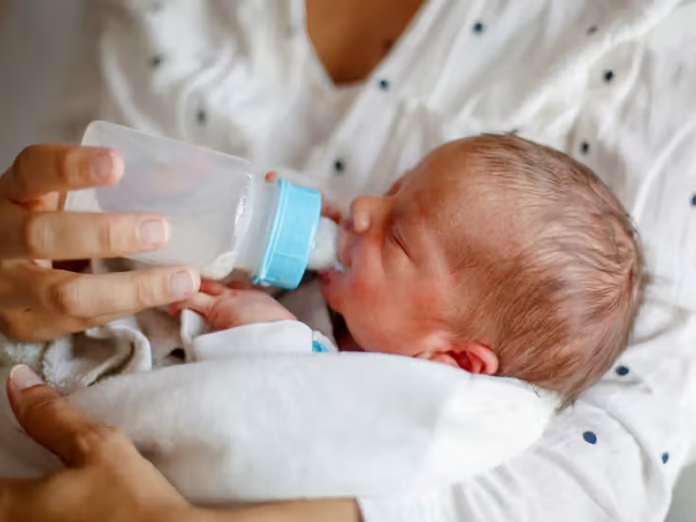Understanding Your Baby Feeding Schedule
In the first few months, feeding your baby should be straightforward: offer them breast milk or a bottle whenever they’re hungry. Babies will make it clear when they need to eat, often through crying, but there are other signs too.
Following your baby’s cues, instead of sticking to a strict schedule, is known as “demand feeding.” Since your baby can’t say “I’m hungry,” look for these hunger cues:
- Leaning towards your breast or a bottle
- Sucking on their hands or fingers
- Opening their mouth, sticking out their tongue, or puckering their lips
- Fussiness
- Crying, though feeding your baby before they cry is ideal as it can be hard to calm them once they’re upset.
How Often Should You Feed Your Baby?
Every baby is unique, and feeding frequency depends on whether they’re drinking breast milk or formula, as breast milk digests more quickly.
- Breastfeeding: Newborns typically nurse every 1.5 to 3 hours. As they grow, they’ll nurse less frequently and develop a more predictable pattern. Newborns should nurse 8 to 12 times a day for the first month, decreasing to 7 to 9 times a day by 4 to 8 weeks old.
- Formula Feeding: Initially, formula-fed babies usually want a bottle every 2 to 3 hours. As they grow, they should be able to go 3 to 4 hours between feedings.
Growth Spurts and Increased Hunger
Babies may want to eat more frequently or in larger amounts during growth spurts, which typically occur at:
- 7-14 days
- 3-6 weeks
- 4 months
- 6 months
How Much Should Your Baby Eat?
The amount your baby should eat varies by age, growth rate, and feeding frequency. Babies usually drink more each time as they grow. Breastfed babies might drink less per feeding but more frequently than formula-fed babies. Here are general guidelines:
- Newborn to 2 months: Initially, babies may take only half an ounce per feeding, quickly increasing to 1-2 ounces. By 2 weeks old, they should drink about 2-3 ounces per feeding.
- 2-4 months: Babies typically drink about 4-5 ounces per feeding.
- 4-6 months: At 4 months, babies usually drink 4-6 ounces per feeding, increasing to about 8 ounces by 6 months.
Signs Your Baby is Eating Enough
Relax if your baby has 4-6 wet diapers a day, regular bowel movements, and is gaining weight. If you have concerns, consult your pediatrician.
When to Start Solid Foods
Your baby should reach certain milestones before starting solids. The American Academy of Pediatrics (AAP) recommends exclusive breastfeeding until about 6 months. Signs that your baby might be ready for solids include:
- Holding their head up and sitting in a high chair
- Opening their mouth for food or reaching for it
- Putting hands or toys in their mouth
- Taking food from a spoon and swallowing it
- Doubling their birth weight and weighing at least 13 pounds
When to Wean
Most babies are ready to transition from the bottle by 12 to 18 months. Signs your baby is ready include enjoying solid foods more and eating on a regular schedule. Introduce a cup around 6 months and aim to stop bottle use by 2 years old. If breastfeeding, the AAP recommends continuing along with solid foods until at least 1 year old. Gradual weaning is best for both you and your baby.
Balanced diet Black Friday 2024 CDC Celebrity News Cyber Monday Diet Disease Erectile Dysfunction Excercise FDA Fitness fitness journey Food gym hair loss Health health tips healthy eating healthy lifestyle healthy living healthyliving heart health holiday shopping Home Remedies Hormonal Changes Hydration immune system Irregular Periods Lifestyle Menopause mentalhealth Mindful Eating nutrition portion control Protein Reproductive Health sexual health stress management sustainable weight loss Thanksgiving Thanksgiving 2024 Weight Loss wellness women's health Yoga








